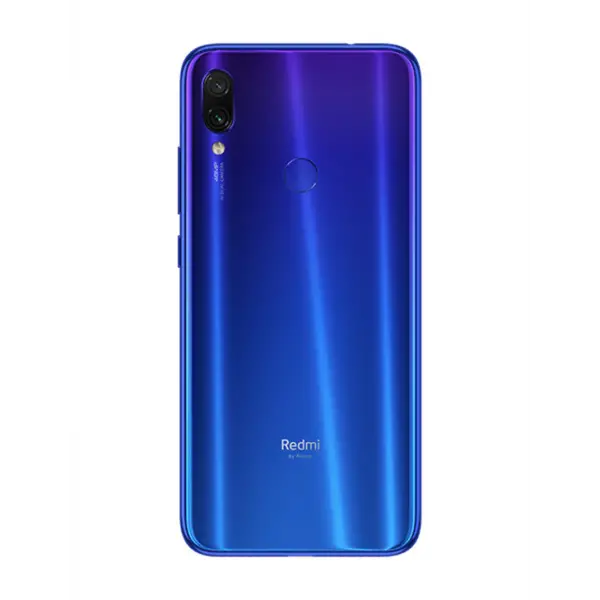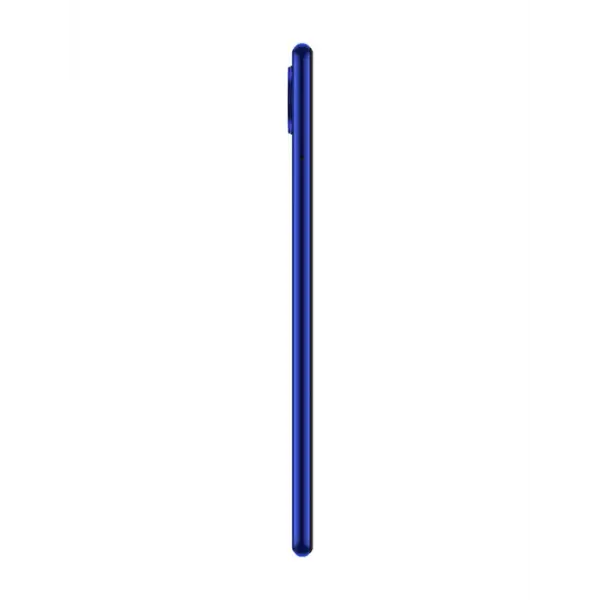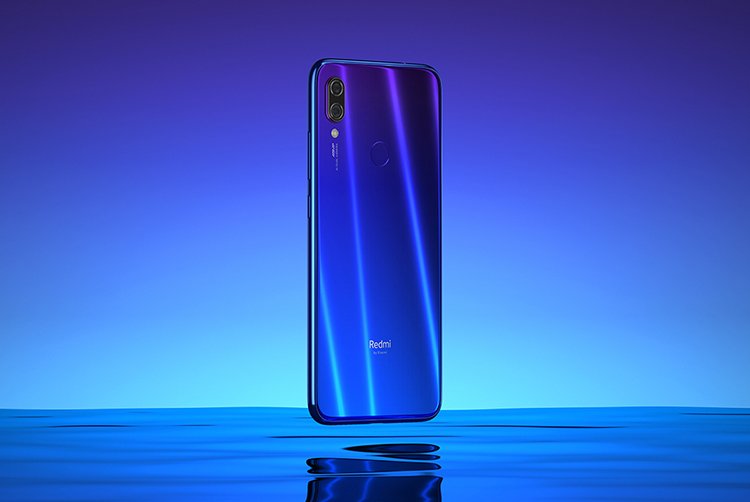January 2019 has become a landmark year for Xiaomi's inexpensive smartphones, which the company has spun off into the independent Redmi brand. For reference, budget devices with this logo began to be marketed back in 2013.
You probably know, but let us tell you: the motto of the Redmi series, which is easy to remember, is this - high technology should be affordable. Because of this, Redmi smartphones are generally not expensive, but have features like higher-end phones. If we have to talk specifically about the Redmi Note, then these models have always had three important qualities that consumers value: a large battery capacity, a good screen and an affordable price. These advantages apply in full force to the Redmi Note 7. In addition, we also get a good camera and an interesting design, as well as a bunch of other trump cards that are gaining the attention of consumers worldwide. It's no wonder Xiaomi has so many fans.
Xiaomi Redmi Note 7 Specifications

- Release date: 2019, January
- Colors: Blue, Black, Twilight Gold
- Dimensions: 159.2 x 75.2 x 8.1 mm.
- Weight: 186 g.
- Screen: 6.3" in, 1080 x 2340, IPS LCD
- Camera : Dual, 48MP
- Chipset: Qualcomm SDM660 Snapdragon 660 (14 nm)
- CPU: Octa-core (4x2.2 GHz Kryo 260 & 4x1.8 GHz Kryo 260)
- Memory: 64 GB, 4/6 GB RAM 32 GB, 3 GB RAM
- Battery: 4000, Non-removable Li-Po
- Network: GSM / HSPA / LTE
- Operating system: Android 9.0 (Pie); MIUI 10
- Sensors: Fingerprint (rear-mounted), accelerometer, gyro, proximity, compass
If you are curious to find out all the details before reading the full review, visit the page for Xiaomi Redmi Note 7 Specs, where you will find even the smallest detail about the phone.
Design

In the beginning, the design of the Redmi Note did not boast distinctive features. The phones in this series looked like most other offerings on the market. In the Redmi Note 7, we see a novelty. The design has been worked on and now the smartphone looks more interesting. The back panel, for example, is made of glass. A red gradient has been added. Gone is the awful vertical camera styled like on iPhones. Yes, the glass body is not something new these days, but it looks where-more original than another plastic back panel.
You'll find the Redmi Note 7 on the market in a few color options - black, sky blue, and red (in all likelihood, the last option will be most relevant for the ladies).
The dimensions of the device are not 159.2 × 75.2 × 8.1 mm. Compared to the Redmi Note 5, there aren't many drastic changes in dimensions.
Display

Xiaomi has been generous in creating the Redmi Note 7, but this does not apply to the OLED display. For devices in this price range, it remains a rarity. With the Redmi Note 7, we get the usual 6.3-inch IPS display, 19.5:9 aspect ratio and 2340×1080 pixel resolution (Full HD+). The pixel density is 409 ppi.
What gives the model an edge over the more expensive Mi 9 is the presence of a higher quality oleophobic coating. It's much easier to remove fingerprints left on the screen with a single wipe.
As for the maximum display brightness, it amounts to 514 cd/m2 . On a sunny day, the screen switches to an enhanced brightness mode, where you may notice a deterioration of colors, and blacks completely disappear. Readability problems are not excluded.
Performance

The Redmi Note 7 uses the Qualcomm Snapdragon 660 - the platform is not one of the latest, we know it from several other devices. An example is the direct competitor - ASUS Zenfone Max Pro (M2). Another representative of the middle class is Nokia 7 Plus. To date, Snapdragon 660 has not lost its relevance and is competitive enough against the background of other devices on the market. The platform uses 8 Kryo 260 cores clocked at up to 2.4 GHz and an Adreno 512 graphics subsystem clocked at 850 MHz.
The power is enough to run the operating system smoothly, and basic applications launch quickly and run without a hitch. You can count on usual performance, and in most games it is advisable to work with the settings.
RAM ranges from 3 to 4 GB and internal storage from 32 to 128 GB.
The presence of an infrared port in the Redmi Note 7 with a corresponding app allows the user to control the technique at home.
Cameras

These days, cameras are a major indicator for buying a new phone. If the Redmi Note 7's weak point is the absence of NFC, its strong point is its cameras. The smartphone has got a dual-camera-dubler module that helps blur the background of portrait shots. No zoom, no wide-angle mode. This is not that important as the phone has a primary module - the 48-megapixel Samsung ISOCELL Bright GM1. Xiaomi Mi 9 and Honor View 20 can boast of a similar type from another manufacturer.
In the Redmi Note 7, the user does not get optical stabilization. Instead, there is a focusing system, which is phased and works quickly and confidently. You won't encounter any issues while shooting during day and night.
By default, the camera shoots at 12 MP resolution and uses the Quad Bayer system that combines four sensors in a single pixel.
In portrait mode, everything is standard. The background is blurred. This trend has been in vogue for some time and doesn't look like it's going to go out of style any time soon. You can turn on the beautifier if you wish.
Software

Xiaomi Redmi Note 7 runs Android 9.0 Pie operating system with MIUI version 10.2. The latter is nicely simplified and works perfectly. It offers the typical merits - a lot of settings, speed and stability.
Autonomous operation
The smartphone supports Quick Charge 4.0 fast charging technology, which will appeal to a lot of modern users. The battery itself has a capacity of 4000 mAh. Combined with an economical platform, the autonomous runtime is decent. In real life, the device can serve you over a day in active use mode.
Without recharging, you can watch movies uninterrupted with a maximum screen brightness of about 10 hours.
In 106 minutes of charging you get 100% battery charge. A plus that can't be left unsaid is the Chinese decision to get rid of the microUSB port and provide a modern USB Type-C.
In the battery settings, the company has offered a solution to the power saving problem. Going into them, you will be able to control the charge consumption and limit the activity of some of the apps.
Conclusion
Redmi Note 7 is one of the best options in the mid-price segment. Weighing up its specs, build quality, 48 MP main camera with AI shooting modes, IR port and excellent IPS display, one can't help but applaud the manufacturer's efforts.
Pros:
- Current design;
- Excellent body design;
- High performance for this class;
- Good shooting quality on both rear and front cameras;
- Intelligently tuned and quality display;
- Presence of infrared port;
- Price as a magnet.
Cons:
- Does not support NFC - contactless payments;
- There is an advertisement in the interface;
- Second SIM card slot and memory card slot is generic;
- No fast charging adapter included.
Xiaomi Redmi Note 7 video review
Disclaimer: The information presented in this article is based on our team's personal experience with the Xiaomi Redmi Note 7 and third-party sources. While every effort has been made to provide accurate and reliable information, readers should keep in mind that this is a subjective assessment. The writing of this article was not paid for or sponsored by Xiaomi.

